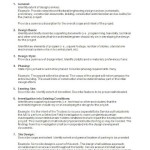Minimalist Interior Design: A Guide to Simplicity and Functionality
Minimalist interior design is a style that prioritizes simplicity, functionality, and clean lines. It is characterized by a deliberate lack of clutter, a focus on essential items, and a preference for neutral colors and natural materials. This approach to design is not merely about aesthetics; it aims to create a serene and calming environment that promotes well-being and focus. While minimalism may seem austere to some, it offers a powerful and refreshing alternative to the often overwhelming clutter and complexity of modern life.
Key Elements of Minimalist Interior Design
The foundation of minimalist interior design lies in a few key elements:
1. Decluttering: The first step towards achieving a minimalist aesthetic is to declutter. This involves identifying and removing unnecessary items, keeping only those that are truly essential or bring joy. This process can be both liberating and empowering, creating a sense of spaciousness and calm.
2. Functionality: Minimalist spaces prioritize functionality over aesthetics. Every piece of furniture and decor should serve a practical purpose. This emphasis on utility leads to a more efficient and streamlined living environment.
3. Simplicity: Minimalist design embraces simplicity in all aspects, from the furniture to the color palette. Clean lines, geometric shapes, and a lack of ornamentation are characteristic of this style. This approach creates a visually uncluttered and peaceful atmosphere.
4. Neutral Colors: While minimalist design thrives on simplicity, it doesn't necessarily mean devoid of color. But choosing neutral colors like white, gray, beige, and black forms the foundation of the palette. These colors create a sense of openness and serenity, while allowing pops of brighter colors to be used as accents.
5. Natural Materials: Minimalist design often incorporates natural materials like wood, stone, and leather. These materials add warmth, texture, and a sense of grounding to the space.
Benefits of Minimalist Interior Design Beyond Aesthetics
The benefits of minimalist interior design extend beyond its aesthetic appeal. Here's how this approach can positively impact your life:
1. Reduced Stress and Anxiety: A minimalist space, free from clutter and visual distractions, can contribute to a sense of peace and well-being. The absence of visual noise reduces stress and anxiety, promoting a calmer mindset.
2. Improved Focus and Productivity: A clear and organized space can enhance focus and productivity. By eliminating distractions, minimalist environments allow for better concentration and mental clarity.
3. Enhanced Creativity: Minimalist design can foster creativity by providing a clean slate for imagination to flourish. The absence of excessive clutter and overwhelming visuals can encourage fresh ideas and original thinking.
4. Increased Sense of Peace and Harmony: The simplicity and order of a minimalist space can contribute to a heightened sense of peace and harmony. It fosters a sense of balance and tranquility, creating a refuge from the chaos of everyday life.
Implementing Minimalist Design Principles
Incorporating minimalist principles into your home doesn't require a complete overhaul. Here are some practical tips to begin your minimalist journey:
1. Start Small: Begin by decluttering a single room or area, like a closet or a drawer. This will give you a sense of accomplishment and build momentum for larger projects.
2. Invest in Quality Furniture: Choose furniture that is well-made, durable, and serves a practical purpose. This will help to create a space that is both functional and aesthetically pleasing.
3. Utilize Wall Space: Maximize vertical space by employing wall-mounted shelves, mirrors, and minimal artwork. This will create a sense of openness and reduce clutter on surfaces.
4. Incorporate Natural Light: Maximize natural light by keeping windows clear and using light-colored curtains or blinds. Natural light adds brightness, openness, and a sense of spaciousness.
5. Add Touches of Color and Texture: While minimalism often favors neutral colors, adding pops of color through accent pieces like throw pillows, blankets, or artwork can add warmth and personality to the space. Similarly, incorporating textures through natural materials like wood, wool, or linen can create depth and interest.
Minimalist interior design offers a fresh and thoughtful approach to creating a home that fosters both aesthetics and well-being. By embracing simplicity, functionality, and a focus on essentials, you can create a serene and inspiring living environment that promotes a sense of calm and clarity.

How To Achieve The Perfect Minimalist Interior Design Juz

Everything You Need To Know About Minimalist Design

Luxury Minimalist Interior Design Ideas Margarita Bravo

Minimal Interior Design A Detailed Guide To Minimalist House

What Is Minimalist Interior Design Style Tarkett

11 Minimalist Home Design Tips And Ideas Designcafe

The Basics Of Minimalist Interior Design Style Allisa Jacobs

Minimalist Interior Design Defined And How To Make It Work Décor Aid

Key Steps To Achieve A Minimalist Interior Design D Perception Ritz Singapore Firm

9 Essential Home Ideas For A Minimalist Goodhomes Co In








